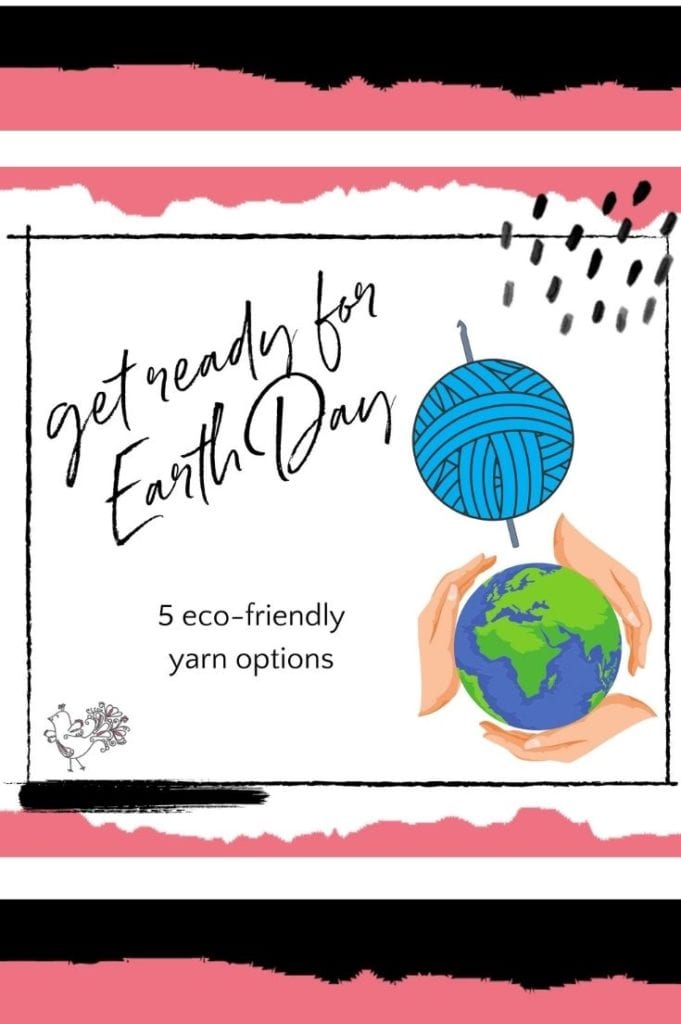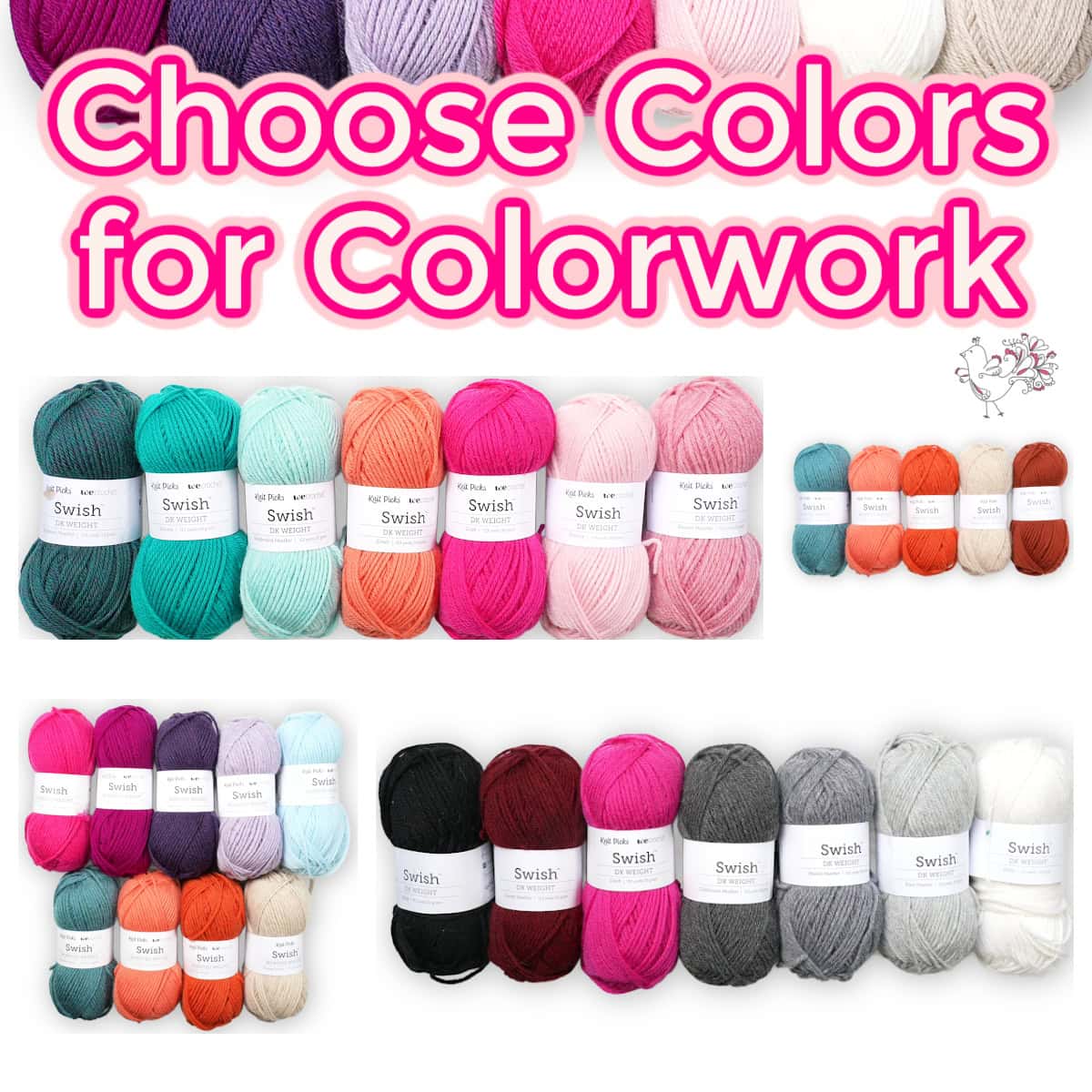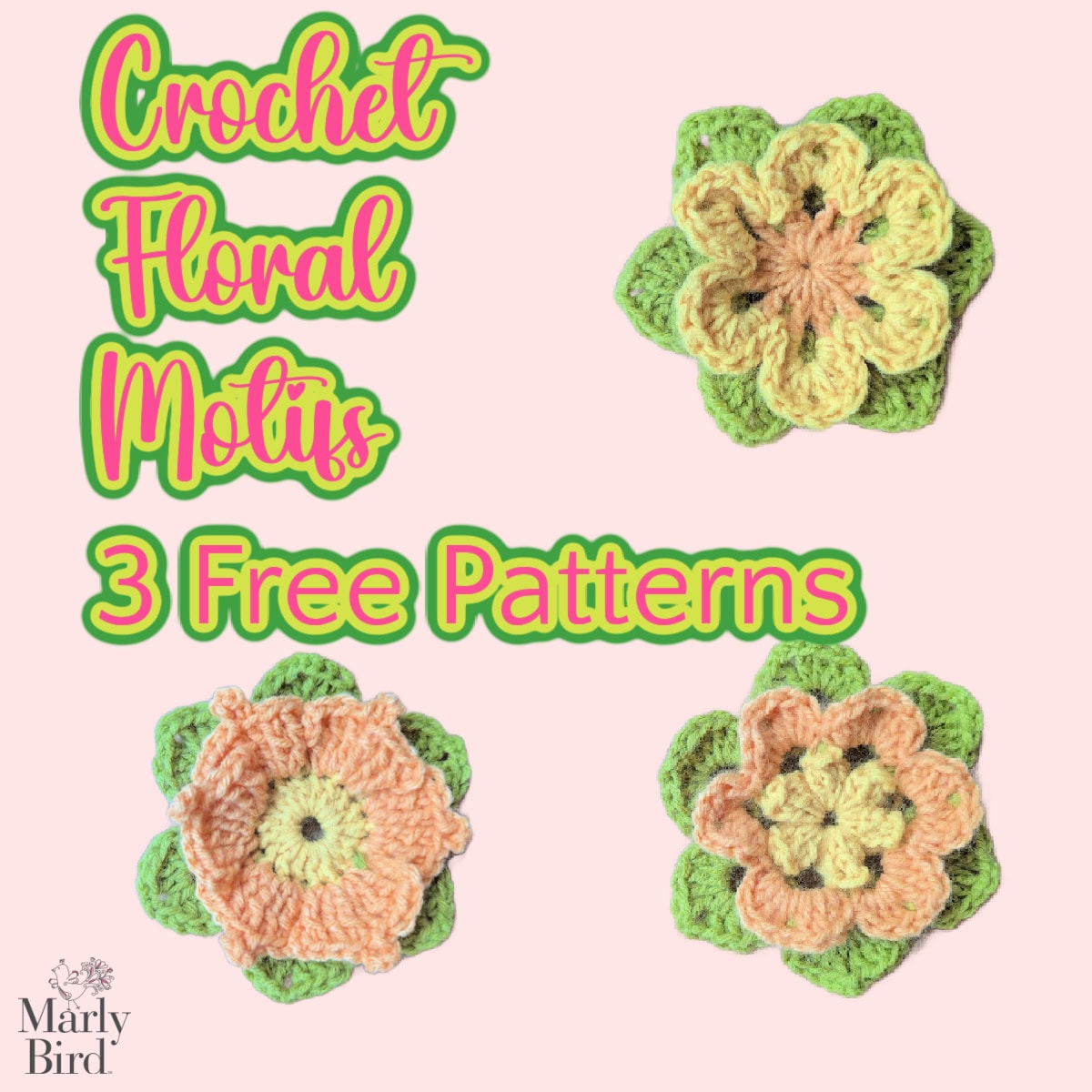5 Eco-Friendly Yarn Options for Earth Day
In our recent post on eco-friendly knitting and crochet, we shared ten tips for how to green your crafting. Several of those were related to yarn. However, this is a complex topic, so we thought we’d make sure you could learn more about it with a post all about eco-friendly yarn.
Note: There are affiliate links in this post. I get a percentage of sales from clicks on those links. Your price doesn’t increase. Thank you for your support.
What Is Eco-Friendly Yarn?
Some yarn is really bad for the planet. This is due to a combination of the material itself and the practices used to harvest the yarn. For example, as much as you might love acrylic yarn, it can be harmful to the environment and toxic to the people making it. Of course, if you get a more sustainable yarn (such as wool) from a company with bad practices, it might still not be as green as it could be. Nevertheless, the more you learn about eco-friendly yarn options, the more power you’ll have to choose for yourself.
5 Eco-Friendly Yarn Options
Despite the differences in sustainability practices among businesses, you can generally assume that the following five options are relatively eco-friendly yarn:
1. Tencel Yarn
Although not easy to find, this is one of the best eco-friendly yarns for knitting and crochet. It’s made from sustainably grown and harvested eucalyptus trees.
Check out: Tina Tape Yarn by Wool and the Gang
2. Silk Yarn
Silk yarn can be made in an eco-friendly way. It’s not a vegan yarn option, since it’s made by animals (silkworms) but it can be harvested in an earth-friendly manner. Moreover, silk decomposes easily, so it won’t sit in a landfill over time.
Check out: Paton’s Silk Bamboo Yarn which is 70% bamboo and 30% silk.
3. Alpaca Yarn
Many animal fibers need a lot of chemicals to process them into yarn. However, alpaca is naturally lanolin-free. As a result, it doesn’t require that harsh processing. That makes alpaca yarn one of the most eco-friendly yarns made from animal fur.
Check out: Sugar Bush Nanaimo which is an alpaca silk blend.
4. Food Yarn
Did you know that you can get corn yarn, made from the fibers of corn husks? What about banana fiber yarn? And there is soy yarn which comes from the leftovers of tofu production. All of these are eco-friendly yarn options.
Check out: Kaleidoscope Banana Fiber Yarn from Darn Good Yarn
5. Organic Yarn
You can find organic animal yarn (such as organic wool) as well as organic plant yarn (such as organic cotton yarn.) Generally speaking, organic wool comes from humanely-raised sheep living on chemical-free land. Likewise, organic cotton comes from plants that are pesticide-free and not genetically modified. Furthermore, the fiber isn’t chemically processed to make it into yarn. The less chemicals involved in the production, the better for the Earth.
Other Tips for Finding Eco-Friendly Yarn
To get started with greening your yarn choices, look for the options above. However, you might also want to consider these tips:
- Plant yarn is usually more eco-friendly than animal yarn. Consider hemp, jute, linen, nettle, and bamboo. You can also sometimes find paper yarn and cork yarn.
- Consider using recycled yarn, such as leftover fabric from the fiber industry that has been turned into yarn.
- Research the companies that you buy yarn from to learn about their sustainability practices.
- Look for the label that says a yarn is Oeko-Tex certified. It’s free of hundreds of earth-damaging chemicals. One example: Red Heart Bunches of Hugs.
You Might Also Like:
Categories: Uncategorized












Hey girl, how are you? Been keeping you and family in my thoughts and prayers.
Just a quick Thanks for this list Marly, it was very informative! I am one of the rare few who appear to be allergic to synthetic yarns. My hands get very Itchy, red and swollen when working with acrylic yarn for too long. When I wear a sweater or tee made from any type of synthetic yarn, including polyester, I break out in a rash and tend to perspire profusely. Needless to say, the 1970’s and 1980’s was quite difficult for me to find any garment that wasn’t made of polyester! For most of my patterns I try to substitute the acrylic yarn for something comparable in a natural based fiber. Needless to say, yarnsub.com has been my #1 go to for exploring other yarn options.